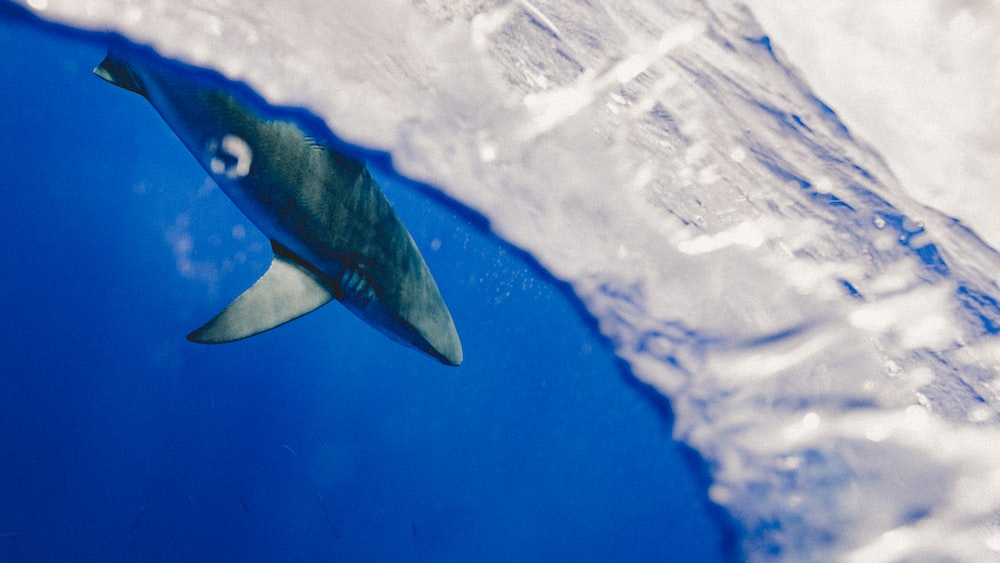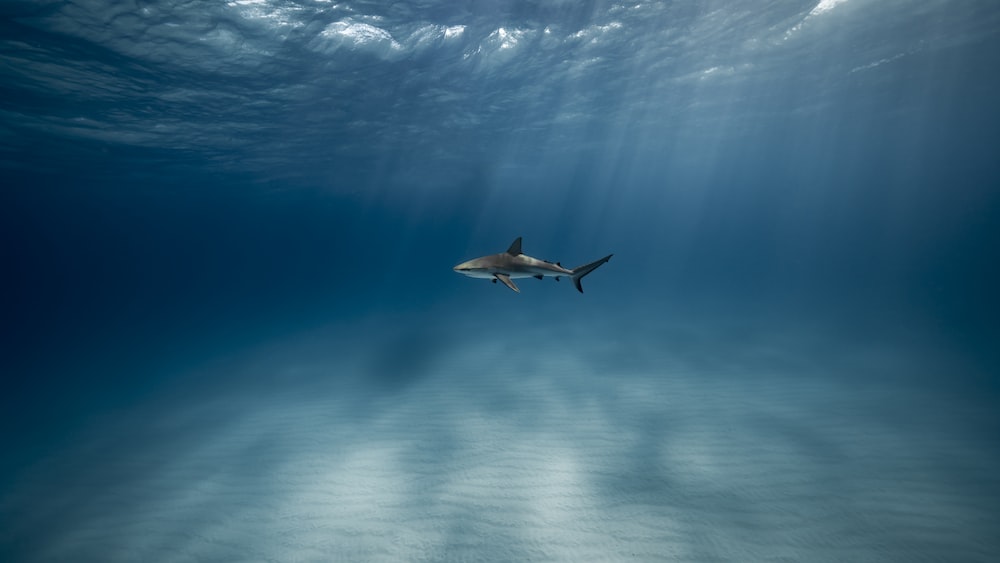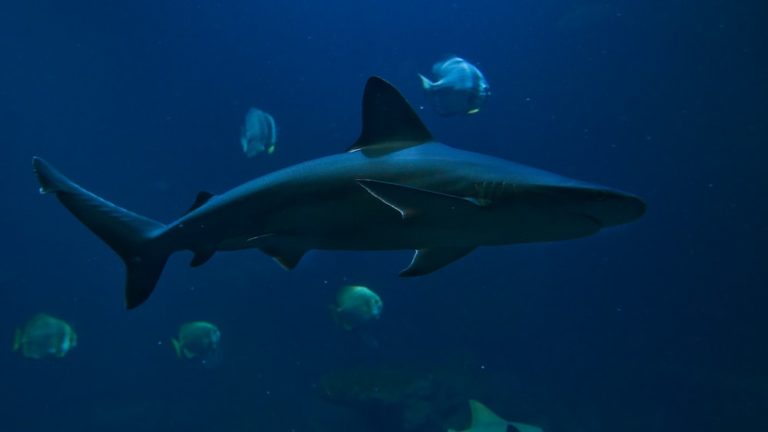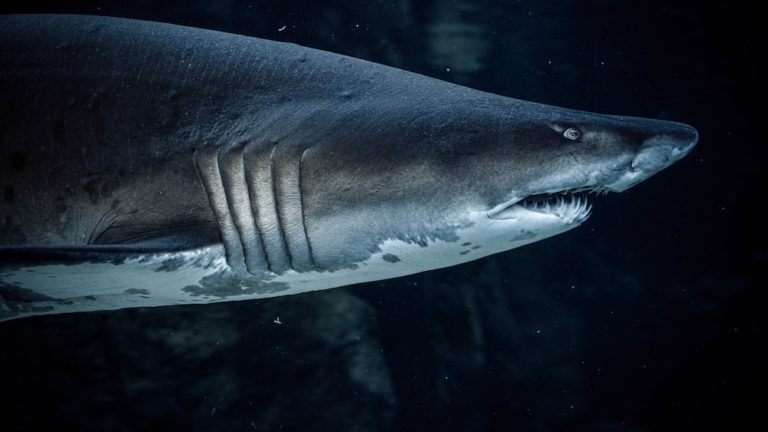Does A Shark Have Lungs? Breathe Easy With The Answer
Does A Shark Have Lungs? Breathe Easy With The Answer
Gather ’round, marine life aficionados, and take a deep dive into the world of one of the ocean’s most fascinating predators. Does a shark have lungs? The question is as intriguing as it is vital to understanding how these majestic creatures conquer the deep blue. Today, we embark on an underwater quest, equal parts educational and thrilling, that will unravel the mysteries of shark respiration.
Key Points:
- Sharks do not have lungs and rely on gills for respiration.
- Gills extract oxygen directly from water as sharks swim.
- Sharks use ram ventilation and buccal pumping to draw water over their gills.
- Sharks have evolved unique adaptations for underwater life, including buoyancy control without a swim bladder.
- Sharks can survive out of water for a limited time, but eventually require water for oxygen.
- Understanding shark respiration and adaptations can lead to a greater appreciation for marine life and the need for conservation efforts.
For those who relish in the thrill of learning at adventure aquariums, witnessing the majestic glide of sharks through tranquil waters, the mechanics of their survival is a tale worth telling. Let’s set sail on this voyage of discovery, immersing ourselves in the realm where science meets the enigmatic life beneath the waves. Together, we’ll explore how sharks have tailored their anatomy to thrive in a world where gills rule, and lungs…well, do they even make the cut?
So, whether you are an eco-adventurer seeking knowledge about the ocean’s depths, a conservationist eager to understand how to protect these incredible animals, or just plain curious, brace yourself. You are about to learn not only about the respiratory secrets of sharks but also why they are the ultimate swimmers of the sea. Don your snorkels of curiosity, for our underwater expedition begins now!
Unveiling the Respiratory System of Sharks
Welcome to the wet and wild world of shark respiration, a topic that’s as breath-taking as a plunge into the icy depths of the ocean. Here in the shark’s arena, lungs are swapped for gills, and every breath is a dance with the currents. With finesse unmatched in the aquatic ballet, sharks showcase a respiratory system elegantly designed for their watery domain.
The Basics of Shark Respiration
To truly grasp the enigma of shark respiration, it’s important to start at the very basics. These creatures of the deep have mastered the art of extracting oxygen from their salty realm with remarkable efficiency. It all hinges on their gills, the gatekeepers of gas exchange, which are vital to their survival.

- Gills are to sharks what lungs are to us; except, their gills are splendidly suited to their liquid environment. These respiratory organs consist of feathery structures packed with capillaries, where the magic of oxygen absorption and carbon dioxide expulsion occurs. Imagine a world where every breath is filtered from the ocean’s embrace – that’s a shark’s reality.
Sharks rely on their gills, which efficiently extract oxygen from the ocean, making them perfectly adapted to their liquid environment.
Gills vs. Lungs: Understanding the Difference
When pondering the question, does a shark have lungs, one must understand the fundamental differences between gills and lungs. Both are respiratory organs, yes, but their form and function are as different as sea and sky. Sharks don’t need the air-filled sacs we land-dwellers are accustomed to because their gills are perfectly attuned to life sub aqua.
- Gills work by extracting oxygen directly from water, which flows over them as sharks swim. This is in sharp contrast to lungs, which take in air and transport oxygen to the bloodstream. In the blue world of the ocean, lungs would be about as useful as a bicycle is to a fish – quaint, but not quite the ticket for survival.
- Here’s the catch: while lungs require an intake of air to function, gills make the most of the surrounding water. There’s a constant exchange, with water entering the shark’s mouth, passing over the gills, and exiting through gill slits. It’s a streamlined process that’s as smooth as the shark’s own glide through the midnight zone.
The Role of Oxygen in Shark Survival
The elixir of life for sharks, as with all breathing organisms, is undeniably oxygen. For these regal swimmers, their entire being is fine-tuned to maximize its use. Sharks must ensure that every flick of the tail and every sweep of the fin contributes to a relentless pursuit of oxygen-rich water.
- As these formidable predators cruise the ocean highways, their gills are ever at the ready, sifting through every molecule of water for that precious gas. It’s an unending quest, as vital as the hunt for their next meal. The role of oxygen for sharks cannot be overstated – it is the cornerstone of their underwater dynasty.
- Oxygen powers muscle movement, fuels the brain, and keeps the shark’s world turning. It is an invisible currency in an underwater economy, where gills are the banks, blood is the current, and every breath is a treasure found.
The Anatomical Truth: Do Sharks Have Lungs?
In the grand tapestry of evolution, lungs and gills represent two very different threads, each woven with precision to suit life’s varying canvases. This brings us to the heart of the matter, the question echoing in the silent world beneath the waves: does a shark have lungs? Let’s exhale the myths and breathe in the anatomical truth about sharks and their respiration.
Debunking Myths About Shark Lungs
The myth that sharks have lungs has been one that’s swum in murky waters of misunderstanding for quite some time. To set the record straight – sharks do not have lungs. They are not among the mixed bunch that dabbles in both water and air. Sharks are gill-exclusive patrons of the ocean, breathing solely through these mastered marvels.
- You won’t find sharks with lungs tucked away in their sleek bodies, for they’ve found a respiratory rhythm that works wonders without them. The gills of a shark are like high-efficiency filtration systems, perfectly designed to thrive in their aquatic theaters.
- Let’s put this myth to bed, once and for all. If you ever hear tall tales at your local adventure aquarium about a shark taking a gulp of air, you can now confidently debunk such fishy fictions.
Comparative Anatomy: Sharks and Their Aquatic Brethren
In the sprawling family tree of aquatic life, sharks may share the water with lung-bearing cousins, but they stick to their gill-bearing roots. It’s an evolutionary path they’ve swum down for eons, honing their bodies into the efficient machines we marvel at today.
- Looking across the spectrum of aquatic species, one can find a fascinating array of respiratory adaptations. From the gills of fish to the lungs of marine mammals like whales and seals, the underwater world showcases a stunning diversity in the ways life has adapted to its environment.
- Sharks, however, have stayed true to their signature style. Other creatures might dabble in air-breathing antics, but sharks are the purists of the sea, relying on their gills to siphon oxygen directly from the water that surrounds them.
Sharks have remained true to their gill-bearing roots, showcasing a stunning diversity in aquatic respiratory adaptations.
The Mechanics of Breathing Underwater
Below the surface, the ocean is not just a home but a living breathing entity, and sharks navigate this liquid landscape with the grace of seasoned sailors. For them, the mechanics of breathing underwater is a choreography seamless as the ebb and flow of tides.
How Gills Function in Oxygen Absorption
The gills of a shark are akin to nature’s original water filters, delicately designed engines of survival that extract life-sustaining oxygen from the sea. As water flows over the gill’s thin membranes, a kaleidoscope of capillaries performs a delicate dance, allowing oxygen to seep in and carbon dioxide to waltz out.
- It’s a constant flux, a perpetual motion of give and take, orchestrated by the ceaseless movement of the sharks themselves. As sharks propel themselves forward, water is ushered in through the mouth, over the gills, performing the essential exchange demanded by life. This is the unsung symphony of the deep, a testament to the intricate interplay between shark and sea.
Ram Ventilation and Buccal Pumping: Breathing Techniques of Sharks
Sharks have adapted two unique methods to draw water over their gills: ram ventilation and buccal pumping. With ram ventilation, some pelagic wanderers, such as the great white shark, cruise the ocean by simply opening their mouths, letting the forward motion push water through their gills. This seemingly effortless technique is efficient but demands constant movement, steering clear of any lazy lounging on the seabed.
On the other flipper, buccal pumping is used by more sedentary shark species, allowing them to rest on the ocean floor like a stingray. By rhythmically moving their cheek muscles (buccally referring to the cheeks), they actively pump water over their gills, even when taking a break from their aquatic exploits. The buccal method shows that when it comes to respiration, sharks can be quite the versatile breathers, not bound to non-stop travel.

Adaptations for an Aquatic Lifestyle
Life as a shark isn’t just gliding gracefully and frightening unsuspecting prey; it requires a suite of anatomical wonders specially crafted for a liquid world. Sharks have refined their bodies over millions of years to fit the bill of the ocean’s adept predators. From the sharpness of their teeth to the sleekness of their skin, every aspect is dialed in for underwater excellence, breathing included, sans lungs.
The Significance of Continuous Movement for Some Sharks
Some sharks have a seemingly tireless lifestyle, embarking on perpetual voyages across vast expanses of the sea. This continuous movement is more than a nomadic preference; it’s a respiratory requirement for species like the hammerhead and the mako shark. Using ram ventilation, these sharks must keep swimming to ensure water flows over their gills, allowing them to extract life-sustaining oxygen – a perfect blend of lifestyle and survival.
The never-ending journey of these sharks is a testament to evolution’s grand design, showcasing a survival mechanism as poetic as it is practical. They’ve turned necessity into an art form, their constant motion a ballet of survival in the big blue.
How Sharks Manage Buoyancy Without a Swim Bladder
In the absence of a swim bladder, sharks rely on an oil-rich liver and dynamic fin movement to remain buoyant. The liver, which can constitute up to 25% of their body weight, is packed with squalene, a light hydrocarbon that helps counteract their naturally dense, sinking bodies. As they navigate the deep, their fins act as hydroplanes that lift and stabilize, allowing them to soar through their saline skies with ease.
It’s a buoyancy strategy that sets sharks apart from bony fish, demanding a more active approach to staying afloat. This liver-fueled buoyancy also comes with a side perk: more room for muscle and, therefore, more power for propulsion – a true marvel of maritime architecture.
Sharks rely on their oil-rich liver and dynamic fin movement to remain buoyant, which sets them apart from bony fish and demands a more active approach to staying afloat.
FAQs
1. How do sharks get oxygen if they don’t have lungs?
Sharks get oxygen directly from the water using their gills, which filter and extract dissolved oxygen as water flows over them. Their gills are highly efficient at drawing out the needed life-giving gas, akin to how lungs allow humans to breathe air. Thus, sharks thrive underwater without lungs.
2. Can sharks survive out of water?
Sharks can survive out of water for a limited time depending on the species and circumstances, but they eventually succumb to suffocation or organ failure. Without water passing over their gills, sharks cannot extract oxygen, which is crucial for their survival. It’s like humans trying to breathe without air; both scenarios don’t end swimmingly.
3. Do all sharks need to keep moving to breathe?
Not all sharks need to keep moving to breathe. While some species rely on continuous movement for ram ventilation, others employ buccal pumping to actively draw water over their gills, allowing them to breathe while stationary. Shark respiration is thus a tale of two techniques, each suited to a different lifestyle beneath the waves.
4. How do sharks sleep without drowning?
Sharks do not sleep in the same way humans do; instead, they have periods of rest where some can switch to buccal pumping to breathe. As a result, they are able to conserve energy while still maintaining oxygen flow to their bodies. Essentially, sharks have evolved a snooze strategy that keeps them from taking an eternal dive.
Conclusion
Our aquatic journey has woven us through the currents of shark respiration and buoyancy, debunking myths and diving into the truth beneath the surface. It’s clear now that the question “does a shark have lungs?” leads us to appreciate the remarkable adaptations that enable these creatures to master their marine realm. The diversity of breathing methods sharks employ serves as a reminder of the ocean’s complexity and the wonders that lurk within its depths.
We’ve pulled back the ocean’s veil, revealing insights often hidden in its blue mysteries. By understanding these truths, we become more connected to marine life and more aware of our role in preserving their world. Contemplation of our impact on sharks and their environment is the first ripple in the wave of change.
So, next time you’re out on an eco-adventure or simply daydreaming of the deep blue, remember the sharks and their gill-powered grace. May your every dive be as enlightening as a shark’s silent glide through the ocean’s embrace. Until our next underwater tale, keep exploring, keep conserving, and always keep that breath of curiosity alive. Farewell, fellow ocean enthusiasts, and may your passion be as unending as the sea.
Safe travels and gentle tides, Jasper Flynn







